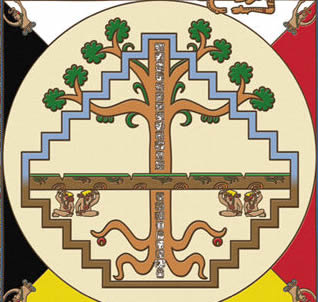We have been chatting about the Milky Way, and the many things the Mayans saw in it. But in addition to a ball court or a crocodile, the Milky Way is also the World Tree.
In the Popul Vuh, the World Tree is mentioned as the origin of all life, with the 4 cardinal directions spreading out from it's center.(Many other ancient cultures have a World Tree as a part of their creation tradition). We can think of the great tree as soaring above us, the Milky Way being it's branches. In some legends, there is a great monster in the tree, it's mouth being the Dark Rift. In other versions, the trunk of the ceiba is actually a crocodile, (like a croc, the cieba has rough skin, with thorns found along it's trunk), and its mouth is the Drak rift high in the sky. With a bit of imagination, it is easy to see how the Mayans view the great Milky Way as the collective branches of the tree.
A major element of the World Tree includes the Kawak Monster, a giant head with a kin (symbol) in its forehead. A bowl on its head contains a flint blade representing sacrifice, and death.On top of the World Tree we find a bird that has been called, the Principal Bird deity, or Itzam Ye. During the months of winter, when the so-called "Winter" Milky Way dominates the sky, it was called the "White Boned Serpent."

Soon I will start to pull this symbology together with the Mayan calendar, time and the doomsday. But first I will be spending the next few blogs talking about a new exhibit at the Peabody Essex Museum, which is about the Mayans, and their connection to the sea.
J.T. Turner
Mayanist


Love learning about the Maya through you! :)
ReplyDelete